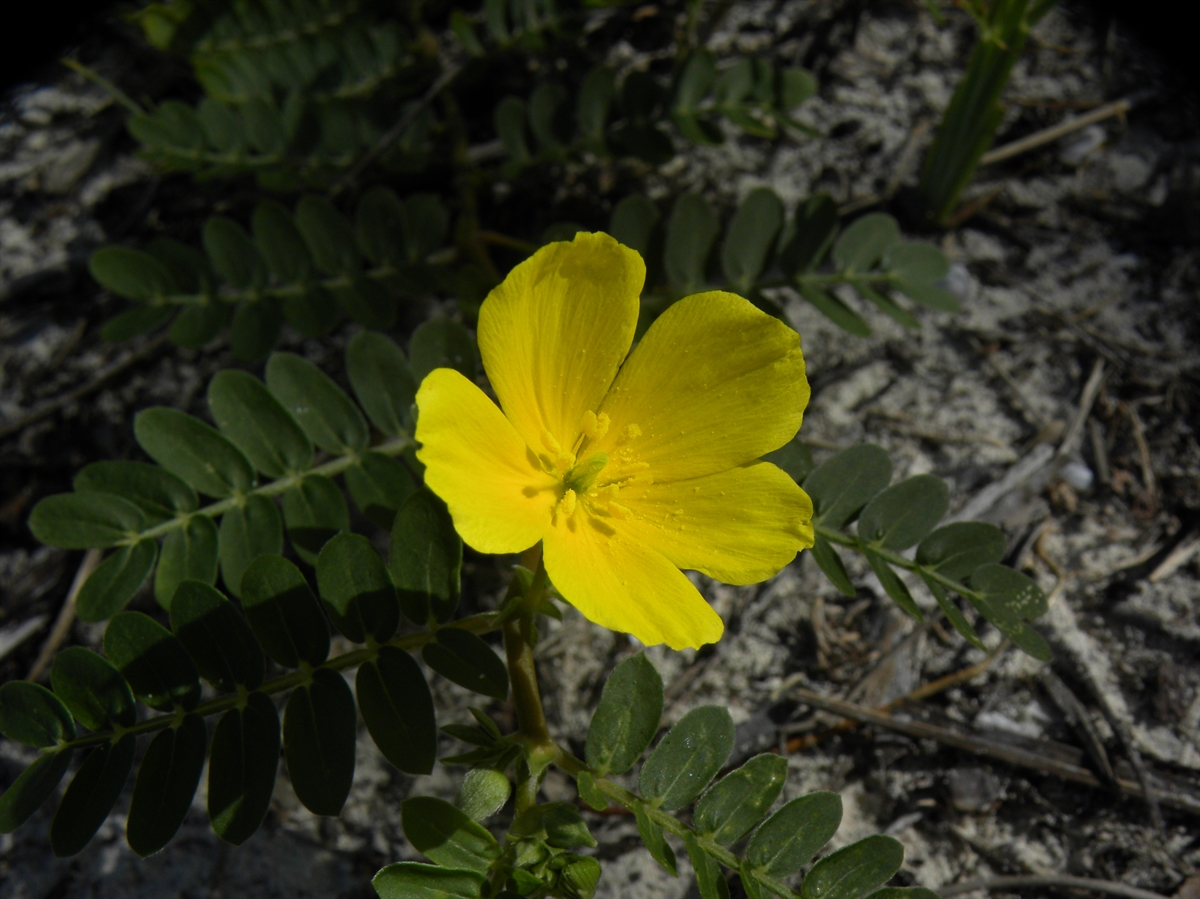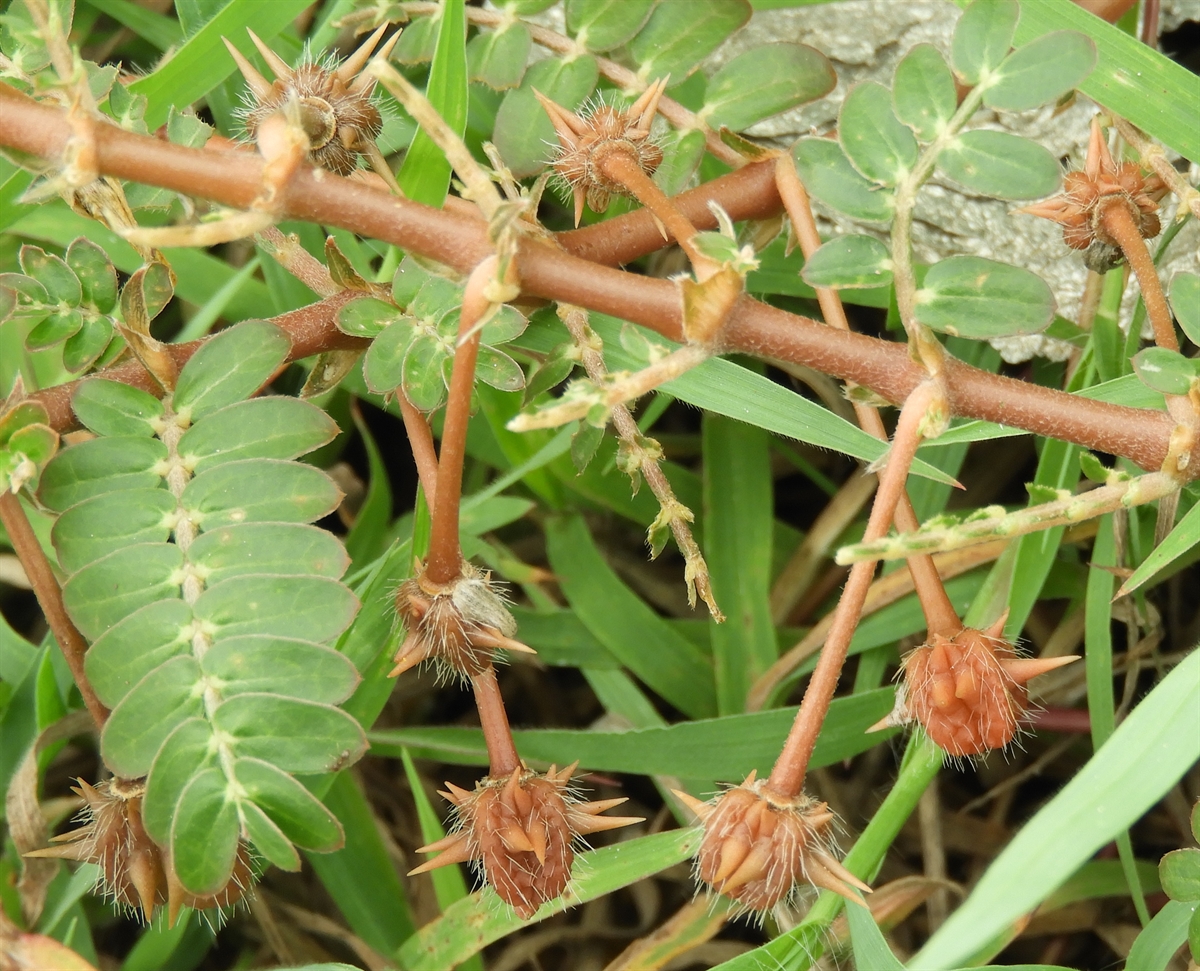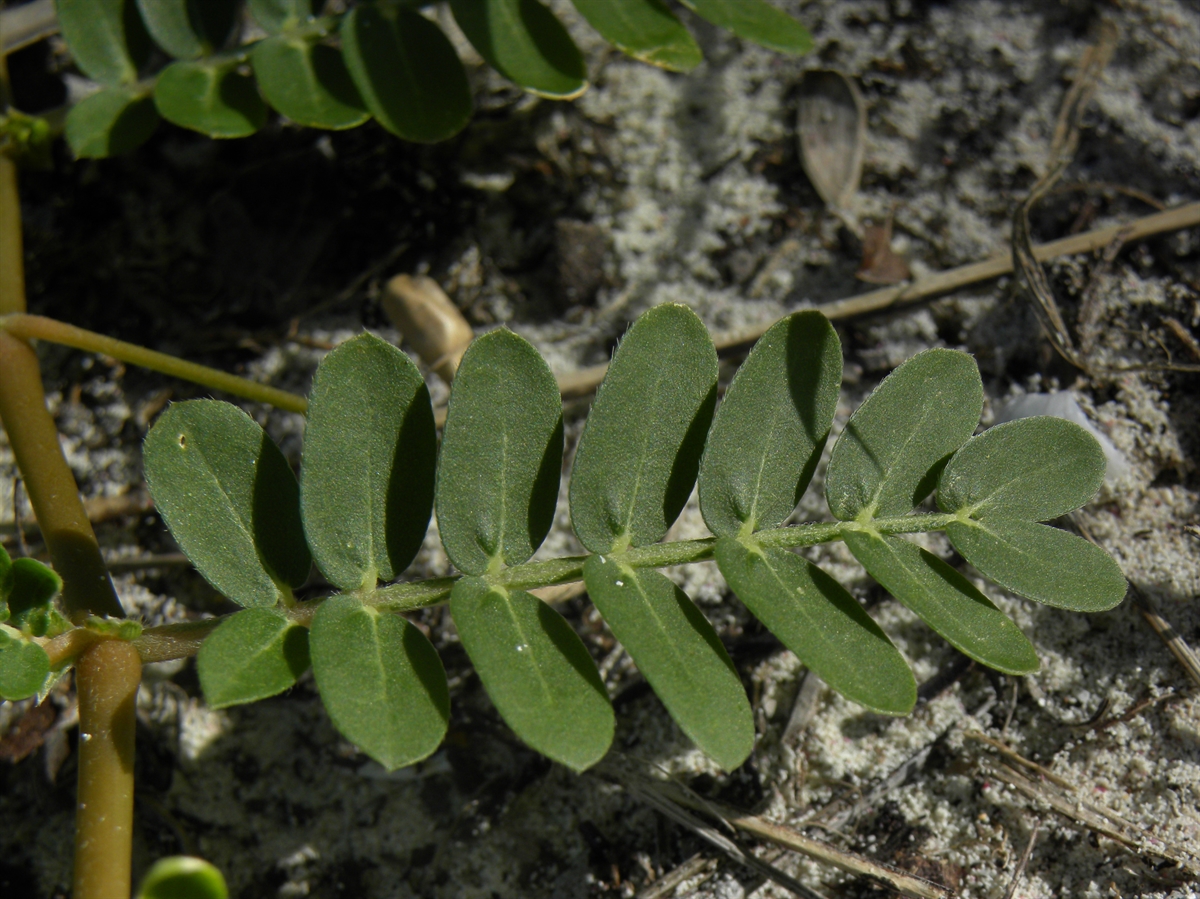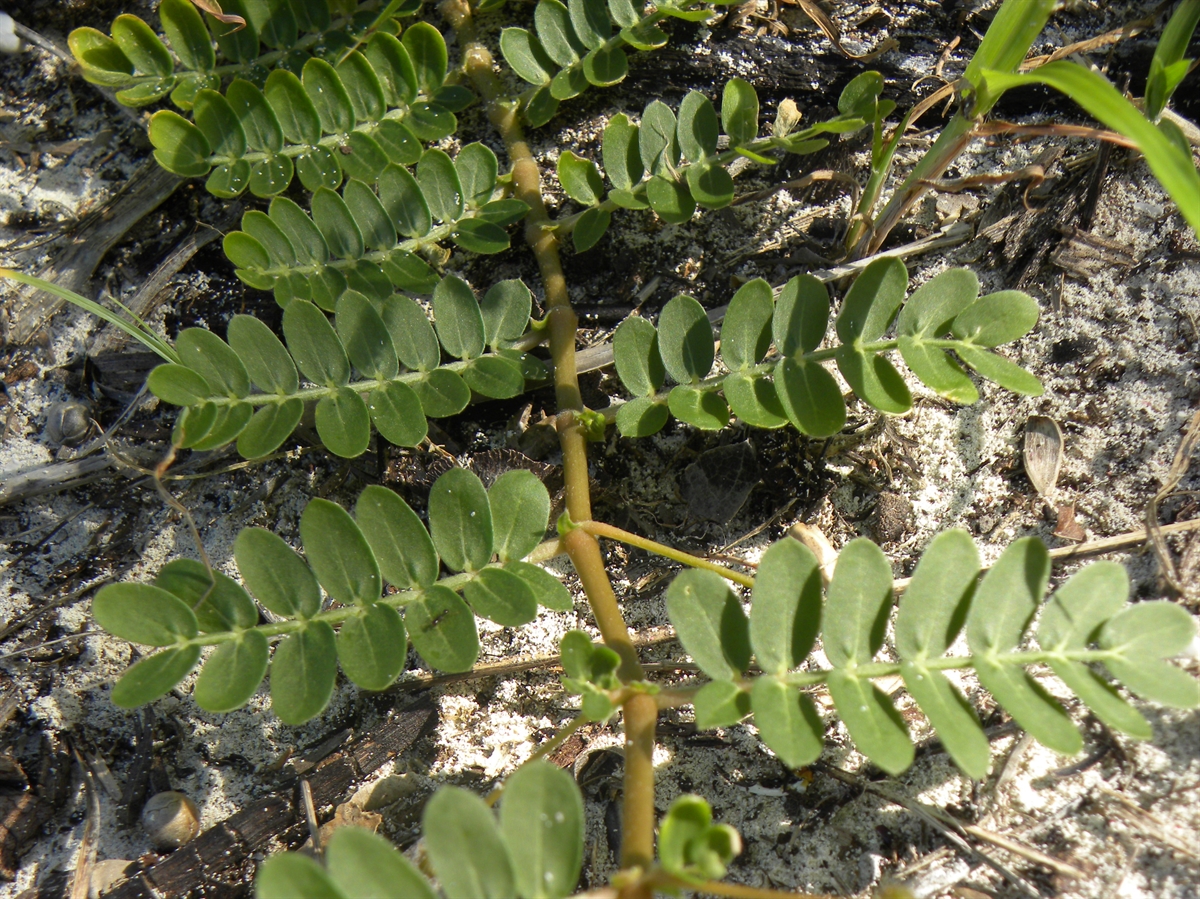Habit: Tribulus cistoides grows as a procumbent perennial herb to subshrub up to spreading to 50 cm. The stems slightly pubescent. The pinnately compound leaves are arranged oppositely, to 8 cm with 5-10 pairs of leaflets. Leaflets oblong to elliptic to oblong, to 2 cm long with an entire leaf margin, an acute/obtuse leaf apex and are abaxially pubescent.
The complete, perfect, actinomorphic flowers are solitary arising from nodes. The calyx has 5 unfused greenish sepals. The corolla has 5 unfused yellow petals. There are 10 stamens. The pubescent ovary is superior with 5 locules and numerous seeds. At the base of the over is a 5 lobed nectary gland. The fruit is a hard capsule covered with spines.
Habitat: Tribulus cistoides grows in Human Altered environments (yards, abandoned fields, roadsides).
Distribution: Tribulus cistoides is NOT native to the Lucayan Archipelago. It is originally from East Africa, southeast Asia and Australia but is now a weed throughout the western hemisphere tropics and subtropics.
Medicinal/Cultural/Economic usage: Tribulus cistoides is not known to be used medicinally in the Lucayan Archipelago.



